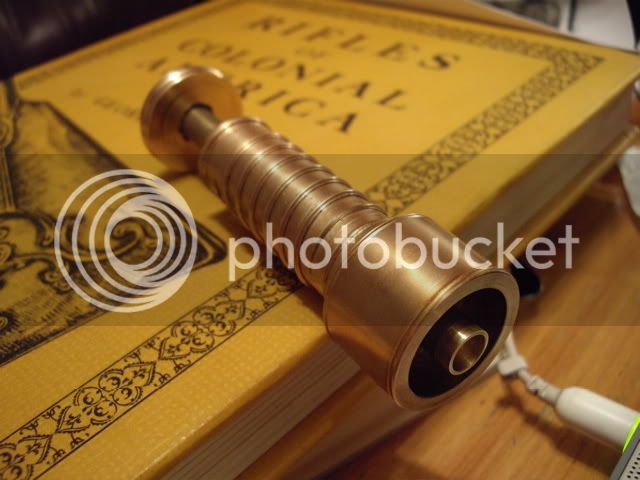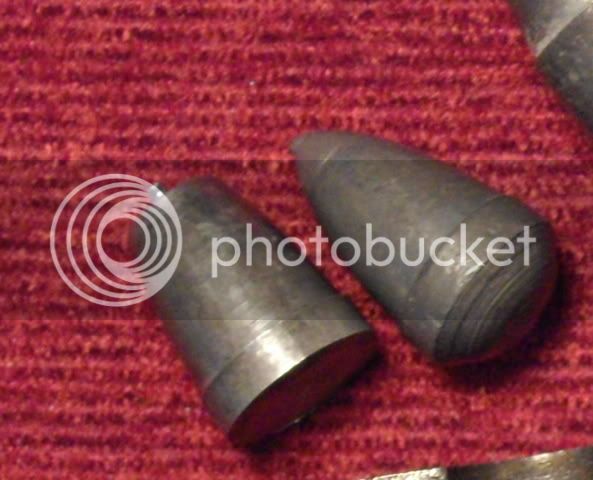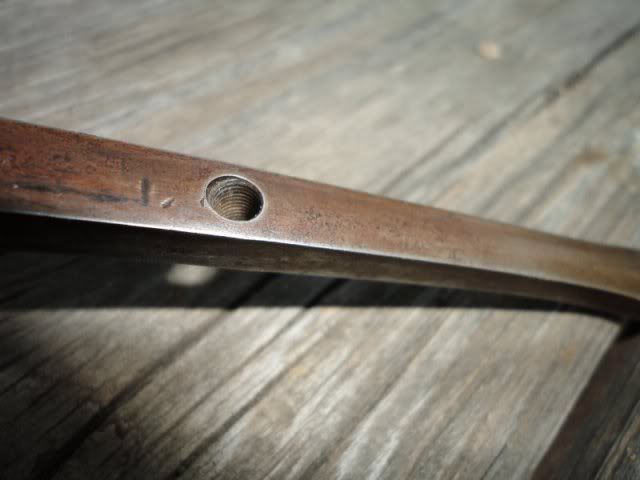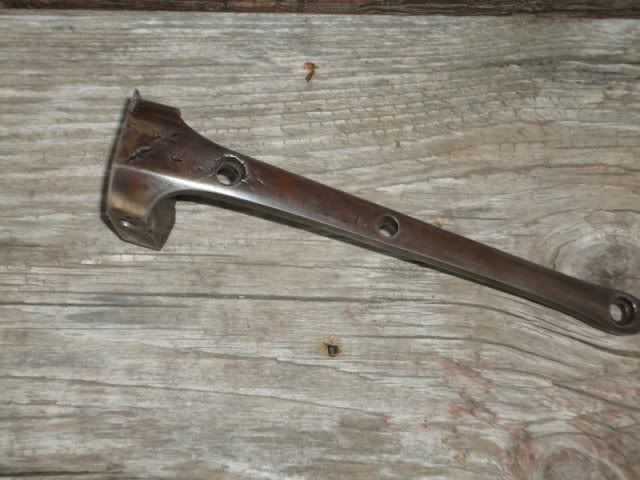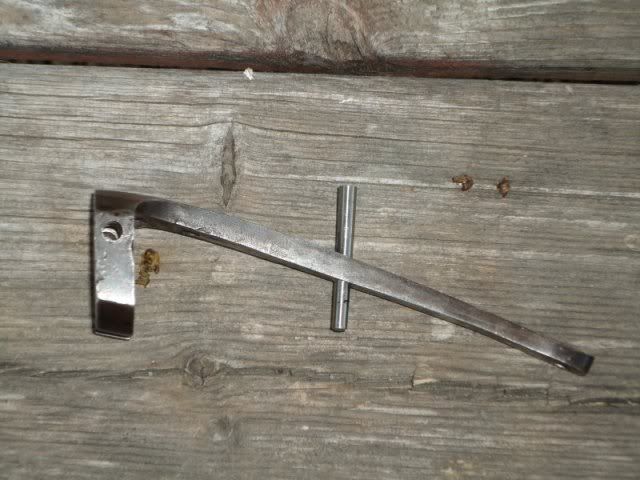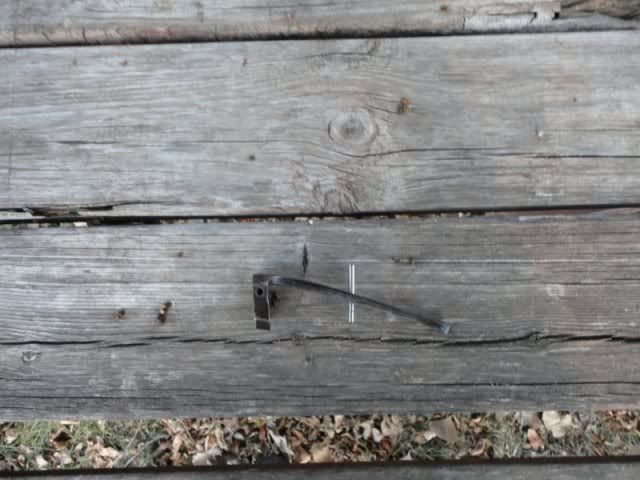I got this at a gunshow. No marking on it anywhere that I can see.
The gentleman I got it from did not know anything about it other
then he liked it too. I paid a bunch for it.
Barrel is held to the tang with a tapered pin.
The tang is drilled and taped for some type of a peep sight maybe.
About a .350 caliber, maybe less, no more then.
Five groove rifling.
Rate of Twist of is 1:34
Barrel is 26 inches long, 3/4 across the flats. 41.5 overall length.
13 1/4 length of pull.
Adjustable trigger. I think anyways, I have not moved the screw behind
the trigger nor taken it apart to look yet.
German silver fittings.
The barrel flats are seven sided. Not octagon. The bottom two flats are
wider then the other 5 flats.
What is it? Who made it? When was it made?
What is the muzzle rounded at the front for?
No holes in it like for a false muzzle. Did they have some other loading
aid or apparatus that fit over the muzzle. any pictures?
Any ideas about the missing peep sight?
It needs some TLC but I will post those problems on the Builder Bench.
Pictures
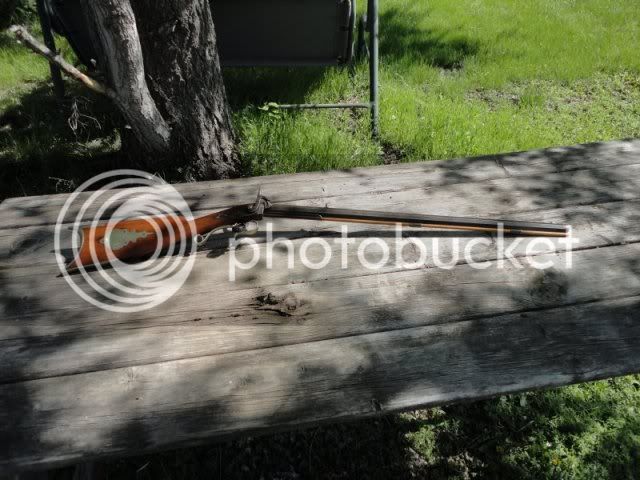
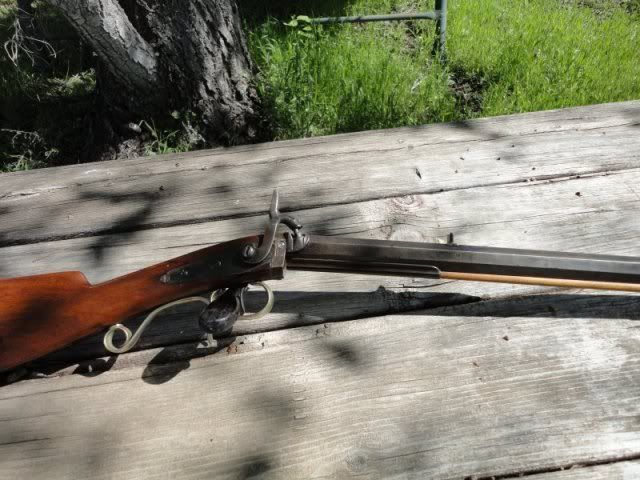
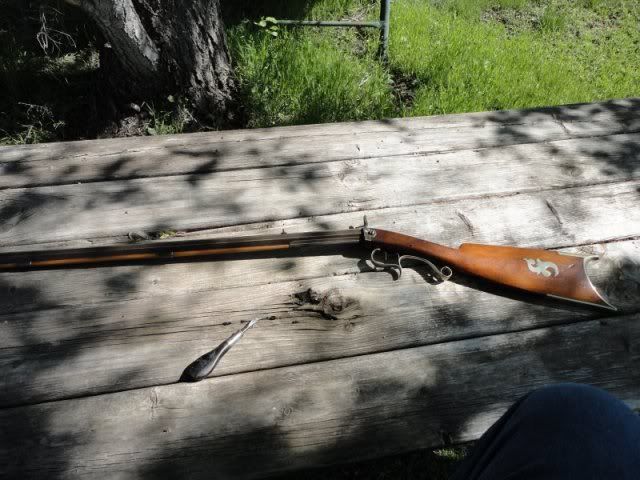
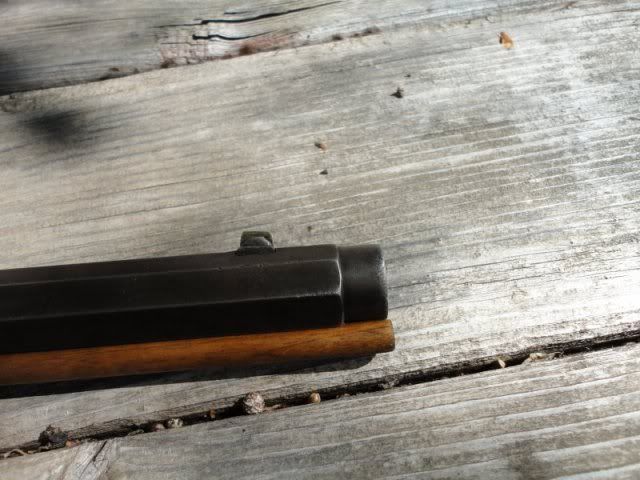
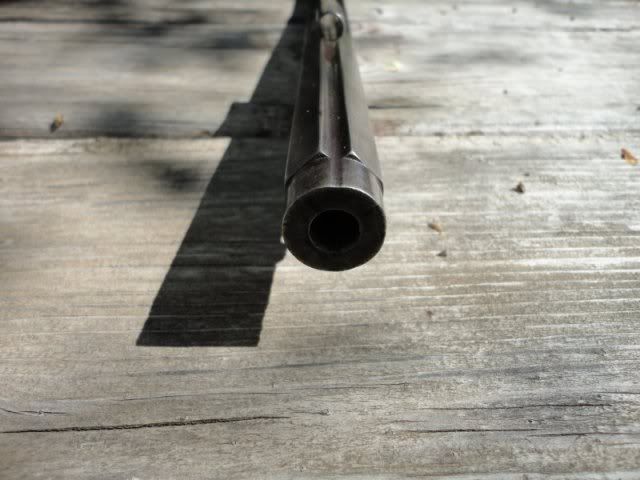
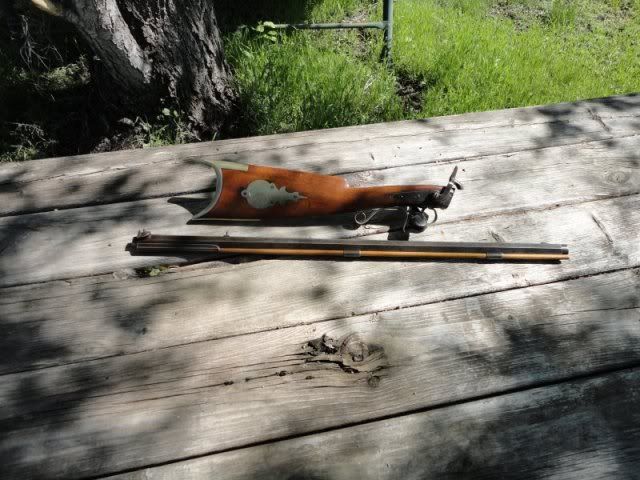

Thanks for any information and comments.
Tinker2
The gentleman I got it from did not know anything about it other
then he liked it too. I paid a bunch for it.
Barrel is held to the tang with a tapered pin.
The tang is drilled and taped for some type of a peep sight maybe.
About a .350 caliber, maybe less, no more then.
Five groove rifling.
Rate of Twist of is 1:34
Barrel is 26 inches long, 3/4 across the flats. 41.5 overall length.
13 1/4 length of pull.
Adjustable trigger. I think anyways, I have not moved the screw behind
the trigger nor taken it apart to look yet.
German silver fittings.
The barrel flats are seven sided. Not octagon. The bottom two flats are
wider then the other 5 flats.
What is it? Who made it? When was it made?
What is the muzzle rounded at the front for?
No holes in it like for a false muzzle. Did they have some other loading
aid or apparatus that fit over the muzzle. any pictures?
Any ideas about the missing peep sight?
It needs some TLC but I will post those problems on the Builder Bench.
Pictures






Thanks for any information and comments.
Tinker2






